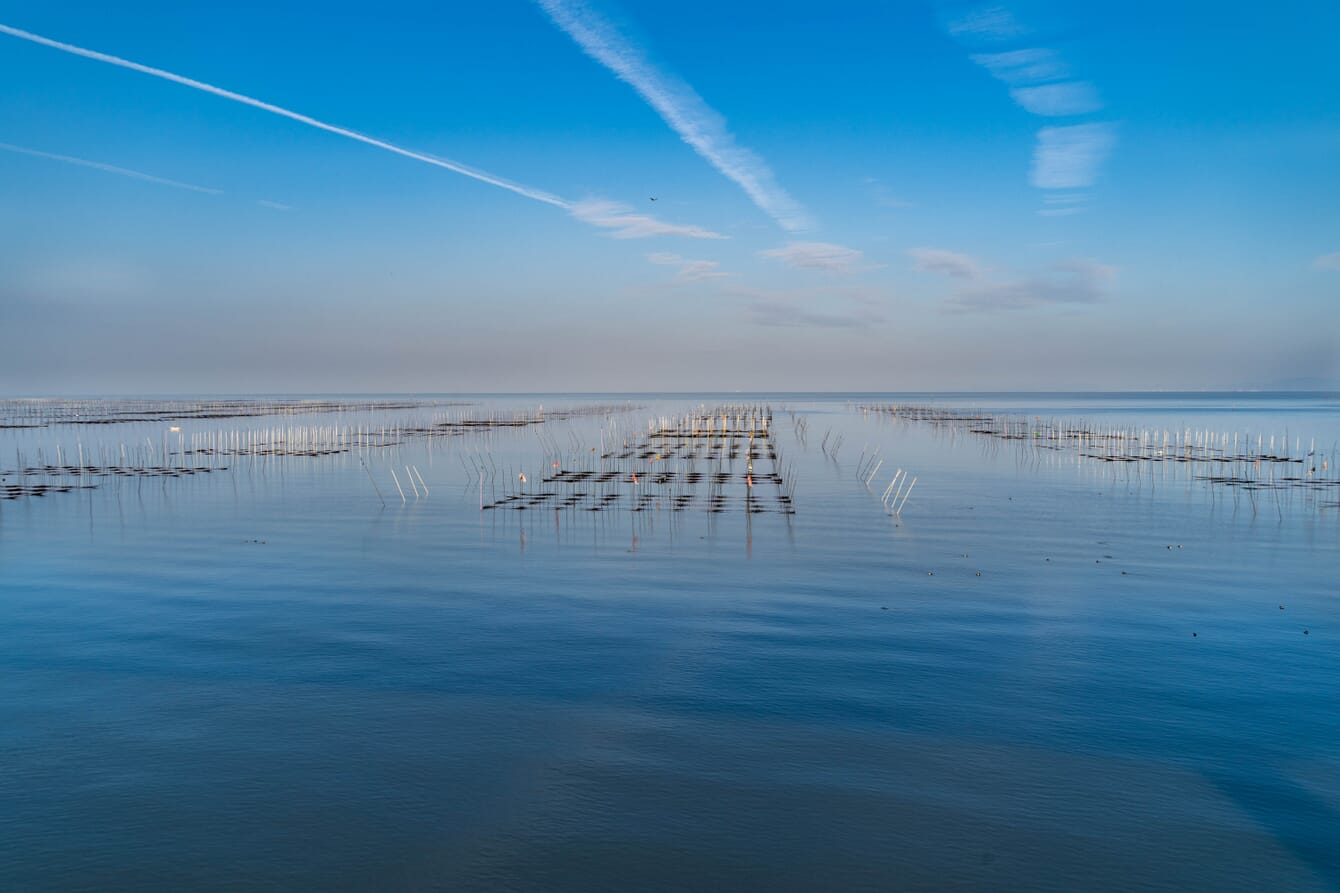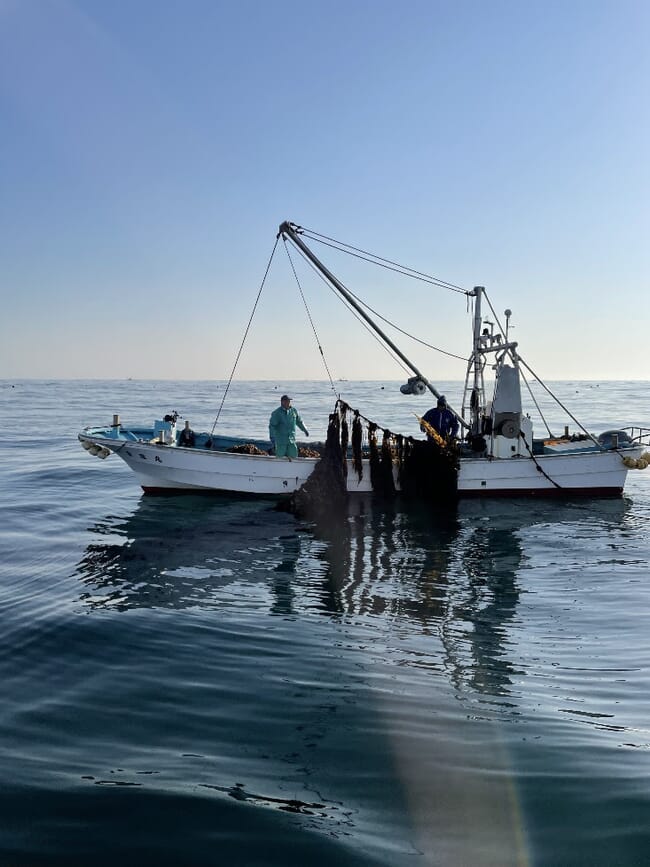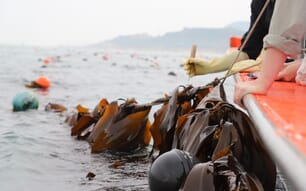
Japan is one of the world's largest seaweed producers
Japan recently decided to factor the carbon sequestration of wild seaweed and seagrasses into its national emissions calculations, which could set a precedent that could invigorate the macroalgal blue carbon credit trade – both in Japan and beyond.
Through leveraging satellite imagery to estimate total near-shore blue carbon ecosystems, the government calculated annual blue carbon absorption at 360,000 tonnes in 2022, equivalent to the emissions of about 140,000 households.
It’s not immediately clear to me what estimates the government used in its methodology to calculate total sequestration, nor how much seaweed featured in the calculations. But it is believed to be the first instance where a country has included national seaweed CO2 absorption in Greenhouse Gas Inventory Reports submitted to the United Nations.
A possible methodology
While the methodology of the report is not immediately available in the public domain (at least not in English), Japan has done a lot of work in this area in recent years, and key stakeholders within Japan’s blue carbon sector and the government-authorised Japan Blue Economy Association (JBE) recently published a paper which can help us understand the likely process.
To calculate wild seaweed and seagrass blue carbon in Japan, this paper estimated a total ecosystem “area” and a “removal coefficient” (the annual increase in carbon in the ecosystem per unit area), before multiplying the two numbers together to predict a rate of uptake of atmospheric CO2.
In this paper, the carbon removal coefficients used were: 4.9 tonnes CO2/ha/year on average for seagrass beds; and between 2.7 and 10.3 tonnes C02/ha/year on average for macroalgal beds (depending on species). The estimated total shallow coastal ecosystem areas were 6.2 x 104 ha for seagrass beds, and 17.2 x 104 ha for macroalgal beds.
This was based on data from nationwide surveys of seagrass meadows and macroalgal beds conducted by the Japan Fisheries Agency from 2009 to 2014, which used Earth observation satellite ALOS, field surveys and aerial photographs.
In contrast to the government’s estimates, the paper suggests that Japan's annual blue carbon absorption likely ranges between 1.32 and 4.04 million tonnes. Within this, seagrass meadows contribute about 23 percent, macroalgal beds approximately 54 percent, and mangroves around 14 percent.
This difference between the two calculations highlights a few things. Firstly, it indicates that the official government figures serve as a more conservative baseline. And secondly, we need more information on what proportion wild seaweed beds contributed to the government’s total calculations.
In addition, the announcement and discrepancy has been a reminder of the all-too-familiar uncertainty facing seaweed blue carbon. This uncertainty is attributable not just to the challenges of accurately estimating total ecosystem areas, but also to the difficulties in validating “carbon removal coefficients” due to insufficient capabilities in monitoring, reporting, and verification (MRV).
On this point, a few leading international experts in blue carbon, while impressed with Japan’s intentions, have expressed to me some concerns with the methodology, emphasising the critical need for rigour when it comes to calculating seaweed’s ability to sequester carbon – and, equally, how this can translate into financial rewards.
For example, here’s what Steve Crooks, co-founder of Silvestrum Climate Associates – which has developed and implemented methodologies for quantifying carbon sequestration in coastal wetlands – had to say: “It’s still very early days for seaweeds in blue carbon. I am part of a number of discussions and demonstration activities on connecting seaweeds to carbon markets, including being part of the team leading a Verra seaweed framework methodology covering natural and farmed systems.

“Broadly speaking there is potential, but the keyword is potential. There are challenges in emissions reduction quantification, MRV, tracking permanence, project stratification and boundaries. Not that these can’t be overcome but at what cost and would the carbon finance prove additional? Open systems like these are complex. We need a good number of test cases to trial viability and inform application.”
Why it matters
Either way, the move is expected to further energise Japan’s trade in domestic blue carbon credits. J Blue Credits – which were created through blue carbon ecosystem (seaweed bed, seagrass bed, tidal flat and mangrove) restoration and endorsed by the JBE – are already in demand. And several prominent companies and entities, Idemitsu - the Japanese oil and gas corporation - among them, have shown keen interest in exploring and investing in this carbon credit system.
Nonetheless, many organisations have been waiting for further legitimisation of the sector. Consequently, the government's recent vote of confidence should help de-risk future credit-generating projects.
As Brian Tsuyoshi Takeda, serial ocean entrepreneur and founder of Urchinomics – the world’s first seaweed restoration blue carbon credit company – noted: “This decision will make Japan the first in the world to integrate algae into its carbon accounting. This means kelp restoration initiatives that support carbon sequestration and biodiversity will be a lot easier to finance.”
Looking ahead
Ultimately, Japan's pioneering work in this field underscores the benefits of government-led management of blue carbon stocks and markets. This serves as a timely response to heightened scrutiny surrounding the integrity of voluntary carbon markets and the rapid, occasionally unregulated, development of offset projects.
Depending on the extent to which wild seaweed blue carbon is factored into the calculations, the move could have significant ramifications for the seaweed farming sector, as farming is considered an anthropogenic intervention. It’s known that several of JBE’s blue carbon projects are seaweed farming operations, and that calculations for macroalgal blue carbon in Japan are based in part on seaweed detritus reaching the deep sea, which should extend to macroalgae farming projects too.
Clearly, many questions remain. But the country's momentum in the near-shore seaweed and blue carbon sector establishes it as a leader in this domain. And the approach it is developing has the potential to become a model for other nations and organisations, akin to how Australia's exemplary efforts in introducing Asparagopsis feed supplements are being used to inspire other nations in this space.
I’d be delighted to hear your thoughts: drop me a line on LinkedIn.





